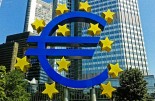BlueBay AM: Goodbye and thank you ‘Super Mario’
BlueBay AM: Goodbye and thank you ‘Super Mario’

By Mark Dowding, CIO at BlueBay AM
As Draghi leaves big shoes to fill, all eyes turn to the Fed, with rate-cut speculation leaving risk-takers deliberating their US exposures.
In his penultimate meeting as ECB chair, Mario Draghi drove through a comprehensive package of monetary easing measures designed to offer ongoing support to the eurozone economy that should last well into Christine Lagarde’s tenure in office. Notwithstanding objections from hawks, which had been voiced in the run-up to the meeting, ‘Super Mario’ carried the day.
By making QE extensions open-ended, we feel that QE-finity will be the focus of ECB policy from this point and, notwithstanding measures to tier bank deposits, we are inclined to think that this week’s cut in the deposit rate to -0.50% will be the last in the cycle.
With further rate cuts having been discounted by market participants, this has seen a bear flattening at the front end of the yield curve. Meanwhile, spreads in the euro periphery rallied along with corporate credit spreads. Over time, the emphasis may move more towards fiscal policy, but this will be a political decision and a transition which, in our view, will only occur slowly in the case of Germany.
For now, ECB measures seem destined to lead to flatter curves and tighter spreads and we maintain a positive stance on long-dated bonds in Italy and Greece.
Meanwhile, in FX markets, the Euro has edged slightly weaker and given how relatively stable major FX crosses have been, it will be interesting to see if this is the beginning of a more substantial currency move.
Economics across the pond
US Treasury yields were also somewhat higher over the past week, as some alleviation of trade fears saw 2020 recession fears moderate, helped by a dis-inversion of the US yield curve with 10-year rates trading back above 2-year maturities.
In part, it is easy to rationalise that the grab for duration drove yields to excessively low levels during August. Economic growth is tracking close to trend at around 2% and inflation has pushed back towards its target in the last few months, with this week’s core CPI up at 2.4% year-on-year. Consequently, it is not clear that the Fed will want to signal much further monetary accommodation beyond the 25bp rate cut, which is widely expected to be delivered by the FOMC next week.
Of course, were Trump to surprise everyone and find a deal on trade with China, this could create material upside potential for growth and yields in the months ahead. However, this still seems unlikely in our view – although the departure of John Bolton could indicate that Trump is growing concerned that his hawkish international stance is hurting the economy and his re-election chances.
Consequently, we would expect a cease fire on trade to be reached, where tariffs remain in place but further escalation is deferred for an extended period. Although this would mean that the outlook for growth in China is still negative and prospects for trade volumes and global manufacturing remain soft, it could be that the worst of the news on the trade front is now behind us.
Parliament in recess but backstop battles continue
In the UK, parliament has now been closed until mid-October, legal challenges notwithstanding. We remain confident that the prospects for the UK to leave the EU on 31 October with a ‘no deal’ are very low and an extension and a late November election remain our base case.
However, the possibility that a deal is done such that the backstop is applied only to Northern Ireland is seemingly a growing possibility.
Conservative Party polling seems to be showing that they can expect to lose seats to the SNP in Scotland, alongside a significant number to the Liberal Party in London, the South East and South West, in constituencies that voted strongly in favour of ‘remain’ in the 2016 referendum.
This is likely to leave the Tories 30 seats short of a majority and therefore they will need to win a material number of seats from Labour in the Midlands and the North East and North West, which currently seems a tall order.
In this context, a November election post an extension is likely to deliver a result where the Conservatives are the largest party, but one which opens the door for a Labour/Liberal/SNP coalition to take office. As such, the desire for the Tories to find a deal seems to have accelerated – though with the hard-line ERG group unlikely to support any backstop compromise, it will still require Johnson to convince a material number of leave-supporting Labour MPs to back him. This seems problematic to us.
After all, if Johnson were to pull off a Brexit with a deal at the end of October, then it is quite likely than any election may result in a strong Conservative majority. Hence any Labour MPs supporting such a position would effectively be propping up Johnson and totally undermining Labour’s chances of taking power.
Looking ahead
All eyes will now be on the Fed meeting next Wednesday. We expect a 25bp rate cut, but of more potential interest will be an assessment of whether the FOMC believes that further cuts will be needed in the months ahead.
That said, we are reminded that after delivering a fairly hawkish assessment when rates were lowered in July, it was tweets from Trump the day after which really moved markets.
In some respects, this narrative makes it difficult to take too much risk in markets where analysis can so quickly fall hostage to headlines. From this point of view, it appears easier to hold onto positions in European markets than in US assets for the time being.
Running a relative position, which is long risk in the long end of Italy and Greece and short in UK Gilts remains very appealing, in our view. The era of ‘Super Mario’ may now have reached its end – yet the legacy may be long lasting. It seems that Madame Lagarde will have big shoes to fill, although hopefully she won’t need to be nearly as active or as inventive as her predecessor.








